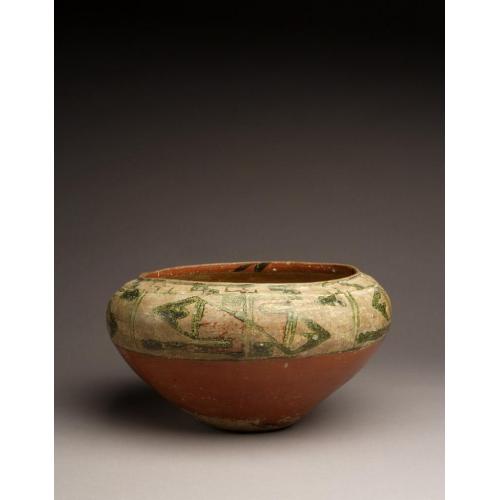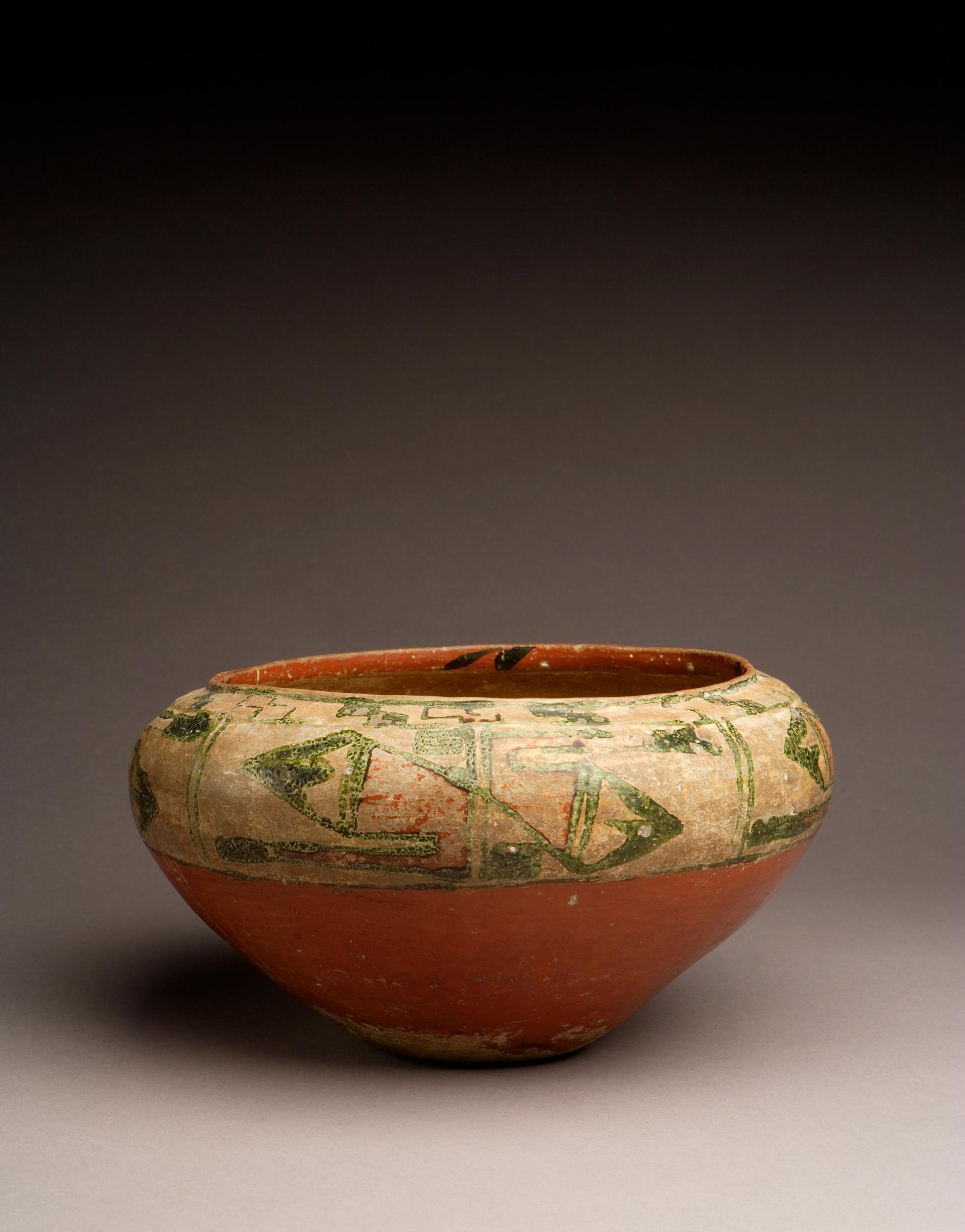
Photograph by Addison Doty. Copyright School for Advanced Research 2010.
Bowl
Date: c. 1670
Artist or Maker: Unknown
Dimensions:
Dimensions: 17.8 × 31.8 cm (7 × 12 1/2 in.)
Weight: 2.2 kg (4.85 lb.)
Medium: clay | paints
Credit Line: Indian Arts Fund purchase for the permanent collection, 1928.
Place Made:
Valencia County, New Mexico, Southwest, United States, North America
Object Number: IAF.935
Not on view
Tribal Collection Review RemarksAccording to the participants in the Acoma collection review visit September 4, 2015 (Events Record “Collection Review: Acoma Pueblo, Review 3”): The bowl appears to have been heavily used. This can be seen in the flaking and erosion of the slips. There is some pitting from calcium carbonate (lime popping). The participants are not sure what the shiny greenish black glaze could be. In past reviews it was speculated to be tree sap which would be applied as soon as the jar becomes touchable post firing. Another potential paint could be a copper sulfite mineral. It may have possibly been combined with the bee weed to help it stick to the pottery. The participants stated that they often find pot sherds on the mesa top with similar glazes.
In Collection(s)
Bibliography:
The Pottery of Zuni Pueblo
- Pg. 103
- Fig. 5.21
Acoma and Laguna Pottery
- Pg. 27, 211
- Fig. 2.4
"Zuni Pueblo Pottery: An Overview"
- Pg. 44
- Fig. 6
The Pottery of Acoma Pueblo
- Pg. 68
- Fig. 3.12
The Indian Arts Research Center, in collaboration with Native American community scholars, strives to present accurate collections records. Records may be updated as new information becomes available and is reviewed with the Native American community having cultural affinity to particular items. Please write to iarc@sarsf.org if you have questions or concerns related to the documentation.
